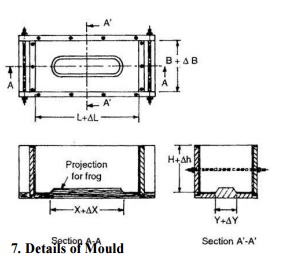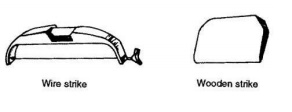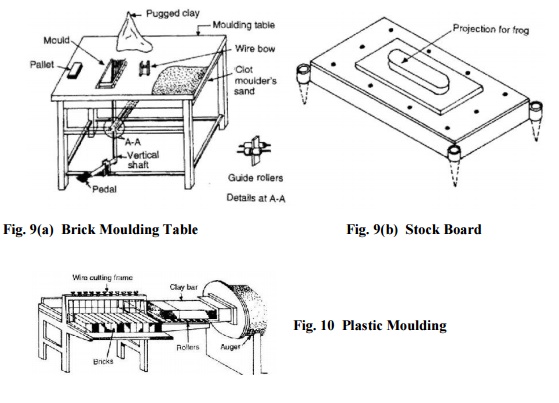Chapter: Civil : Construction Materials: Stones, Bricks,Concrete Blocks
Bricks Moulding

It is a
process of giving a required shape to the brick from the prepared brick earth.
Moulding may be carried out by hand or by machines. The process of moulding of
bricks may be the soft-mud (hand moulding), the stiff-mud (machine moulding) or
the dry- press process (moulding using maximum 10 per cent water and forming
bricks at higher pressures). Fire-brick is made by the soft mud process.
Roofing, floor and wall tiles are made by dry-press method. However, the
stiff-mud process is used for making all the structural clay products.

Hand
Moulding: A typical mould is shown in Fig. 7. Hand moulding is further
classified as ground moulding and table moulding
Ground Moulding: In this
process, the ground is levelled and sand is sprinkled on it. The moulded bricks
are left on the ground for drying. Such bricks do not have frog and the lower
brick surface becomes too rough. To overcome these defects, moulding blocks or
boards are used at the base of the mould. The process consists of shaping in
hands a lump of well pugged earth, slightly more than that of the brick volume.
It is then rolled into the sand and with a jerk it is dashed into the mould.
The moulder then gives blows with his fists and presses the earth properly in
the corners of the mould with his thumb. The surplus clay on the top surface is
removed with a sharp edge metal plate called strike (Fig. 8) or with a thin
wire stretched over the mould. After this the mould is given a gentle slope and
is lifted leaving the brick on the ground to dry.

Notes: (i) This method is adopted when a large and
level land is available.
(ii) To prevent the moulded bricks from sticking
to the side of the mould, sand is sprinkled on the inner sides of the mould, or
the mould may be dipped in water every time before moulding is done. The bricks
so produced are respectively called sand moulded and slop moulded bricks, the
former being better since they provide sufficient rough surface necessary for
achieving a good bond between bricks and mortar.
Table Moulding: The bricks are moulded on
stock boards nailed on the moulding table
(Fig. 9). Stock boards have the projection for forming the
frog. The process of filling clay in the mould is the same as explained above.
After this, a thin board called pallet is placed over the
mould. The mould containing the brick is then
smartly lifted off the stock board and inverted so that the moulded clay along
with the mould rests on the pallet. The mould is then removed as explained before
and the brick is carried to the drying site.

Machine Moulding can be
done by either of the following processes:
Plastic Method: The pugged, stiffer clay is forced
through a rectangular opening of brick size by means of an auger. Clay comes
out of the opening in the form of a bar. The bricks are cut from the bar by a
frame consisting of several wires at a distance of brick size as shown in Fig.
10. This is a quick and economical process.
Dry-press Method: The moist, powdered clay is fed
into the mould on a mechanically operated press, where it is subjected to high
pressure and the clay in the mould takes the shape of bricks. Such pressed
bricks are more dense, smooth and uniform than ordinary bricks. These are burnt
carefully as they are likely to crack.
Related Topics